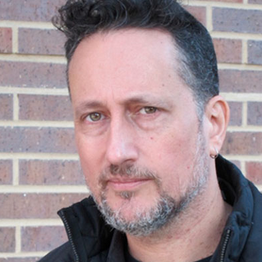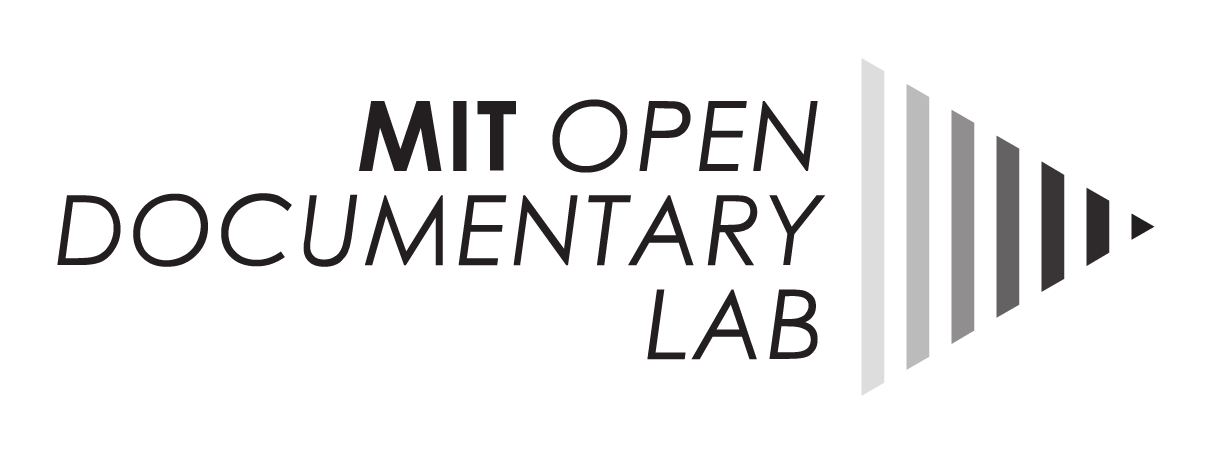
25 Apr The New Digital Storytelling Series: Vivek Bald
The MIT Open Documentary Lab teamed up with Filmmaker Magazine on The New Digital Storytelling Series, a group of interviews with leading digital storytellers, technologists and curators. This interview was previously published on FilmmakerMagazine.com and is reposted with permission.
In the eighth part of Filmmaker‘s interview project with prominent figures from the world of transmedia, conducted through the MIT Open Documentary Lab, Vivek Bald, filmmaker, Associate Professor of Writing and Digital Media at MIT and a member of the MIT Open Documentary Lab, answers our questions. Bald’s ongoing project, Bengali Harlem, documents the history of two little-known groups of South Asian immigrants.
For an introduction to this entire series, and links to all the installments so far, check out “Should Filmmakers Learn to Code,” by MIT Open Documentary Lab’s Sarah Wolozin.
MIT Open Documentary Lab: How did you become a digital storyteller? Were there any projects that inspired you? If not, where did you look for inspiration?
Bald: For me, it was an organic evolution of my documentary practice, and in a sense a coming together of a lot of different interests and skillsets. I kind of fell into web production back in 1995, when the web as we know it was just in its infancy. I was looking for part time employment to support my documentary work and a friend of mine had just been put in charge of Timemagazine’s first website. He basically lied to his boss and told him I knew HTML and then I had to learn it in the two days before my interview. Back then, HTML was just a very basic markup language – about the fanciest thing it could do was blinking text – so it didn’t take much for me to get the hang of it, and then I just built my skills over several years as HTML itself grew and evolved and began to meld with other languages and platforms for web programming and design. So over time I moved from HTML coding to information architecture and interface design, to managing a small web production team.
But web production was always just my day job – the thing I did to make money so I could make my films – and a there were a lot of other filmmakers and artists doing the same thing in NYC at the time. It has only been recently that I’ve been able to come back to the skills and knowledge that I developed between 1995 and 2002, outdated though a lot of it now is, in a way that is transforming and extending my documentary film work. And every time I turn around there are more and more inspiring projects. Since my grounding is in community-based documentary and work that explores particular cities and peoples’ histories, I’ve been really inspired recently by the crowd-sourcing and platform-building of 18 Days in Egypt, by the historical mapping projects being made possible byHypercities, by the activist innovations of my colleague Sasha Costanza-Chock, such as the VozMob project, by the hybrid between traditional documentary and digital archive that my other colleagues Chris Walley and Chris Boebel are developing for Exit Zero, as well as less straightforward “documentary” projects like the South Asian American Digital Archive, and the more text-and-image-based storytelling of the Indian Memory Project.
MIT Open Documentary Lab: What are the most useful skills for an interactive storyteller? What are the tools of the trade?
Bald: At the end of the day, I think the most important skill is still storytelling. There can be any number of innovative technologies out there, but it still takes a good storyteller to put those technologies to use in a way that is engaging and compelling and has depth. That said, it is also important to let go of previous modes and habits and logics of storytelling – at least enough so that you can take advantage of the different possibilities opened up by new technologies and platforms. Some of the things that make traditional documentary films powerful and engaging are the very things that are limiting to web-based docs.
For example, those of us coming from the arena of traditional documentary filmmaking are used to making single-author works; with some exceptions, we are also used to constructing linear narratives, taking the viewer through a clear beginning, middle and end; we are also used to having a finished product that is released and then circulates in its locked and final form, and then fades into the past as we move on to the next project. All of these can be strengths when it comes traditional documentaries: a film with a single director, at its best, is a film with a powerful vision and point of view; a well-constructed linear narrative pulls viewers in, takes them on a journey, and ideally leaves them transformed in some way by the time the end credits roll; a film subjected to the rigors of post-production is something that is crafted and polished and in the best case, says something really important about the moment in time in which it is released. But if we want to take full advantage of web-based and interactive documentaries, we have to be willing to let go of these and other aspects traditional documentary storytelling, to throw open our practice. How can we tell a story that derives its power from being multi-vocal rather than from representing the point of view of a single maker? How can we use that multivocality to explore complexities, contradictions, and ambiguities? How can we engage viewers, take them on a journey, and leave them changed when we don’t direct their pathway through the media, imagery, and ideas that we are presenting? How do we conceptualize story along vectors besides the linear time of watching a film; for instance, how do we create the unfolding of a story over and through space – whether a simulated 3D space on screen or the representational space of maps and images of actual places? And how do we create projects that might be in the public view for several years and derive at least some of their strength and importance from their ability to change over time? It is crucial to develop an openness to these questions and a set of proficiencies for answering them.
While these are conceptual skills, rather than technical skills, they are in some ways more important. It is undoubtedly useful to build as many of the technical skills as you can. And it is absolutely important to maintain a wide working knowledge of current technologies and platforms. But the reason for building technical skills and knowledge, I feel, is to understand what possibilities they open up to you as a storyteller, so that you can then explore and push those possibilities in collaboration with technologists, with other storytellers, and with different communities.
MIT Open Documentary Lab: When you start an interactive project, how do you put together a team?
Bald: My current project wasn’t originally planned as an interactive documentary – it began as a traditional documentary and has now turned into a project that encompasses both a traditional documentary and an interactive web space. So I didn’t put together an interactive team from the beginning. I have just been organically growing in a way that has necessitated reaching out to specific people to address specific needs as they come up. So now I’m getting to a point where I am going to need to work with a graphic designer, a database programmer, and someone with skills in mapping and locational technologies, and I’m building a team ad-hoc. I wouldn’t necessarily recommend that path, but it may be the path that other filmmakers take, either if they are making a transition from a traditional documentary to an interactive project or if they are simply working with a limited budget and building step by step.
MIT Open Documentary Lab: Where is this community and how can people access it?
Bald: I have an advantage, because I teach at MIT, but I would suggest starting with art and technology schools. Young people coming out of those settings may not have as much experience storytelling, but they are often the ones who are up on the latest technologies and coming out of an environment in which they not only have been able to build specific skills but have had the space to experiment.
MIT Open Documentary Lab: How does the role of a director change? What are the creative challenges?
Bald: In part, this depends on how much you want to let go of authorship. Do you want to create an experience that is interactive but designed, structured, and directed by you? Do you want to produce a project in which you have created a basic structure, user experience and look and feel, but you draw content from a number of other people that you then curate – that you place into the structure and design that you have created? Or do you want to create a platform or infrastructure, as in the case of projects like 18 Days in Egypt or VozMob, which then gives others the tools to author and upload their own content and tell their own stories? Each of these approaches (and they’re just points along a spectrum) has its own challenges. (Sorry I am answering questions with more questions, but perhaps that reflects the newness and openness of the field right now.)
MIT Open Documentary Lab: How does the role of the audience change?
Bald: Typically the audience is going to be more active in navigating, piecing together, participating in, or telling the story, but at the same time is more likely to be doing all of this in a more isolated way. That is, what is usually lost is the social activity of watching, experiencing, and reacting to a film in a room together, in a large group that is often composed predominantly of strangers. Some people describe the act of watching a film as “passive” or as somehow more passive than the act of navigating web-based spaces or interactive media, but I think it is a mistake to think of the activity of watching a film in a theater with an audience as passive. Audience members may not be pressing buttons or keys and making decisions about what happens next, but they are having a collective visceral experience, simultaneously experiencing thought and emotion and bodily reactions in a way that doesn’t happen in a lot of online contexts. In a sense, this is one of the challenges I see in terms of how we create or set up our audiences’ experiences. The experience of engaging with an interactive story is never going to be the same as watching a film with other people in a theater, and we shouldn’t be trying to replicate that experience in a new form. But I do think it is important to think through what a simultaneous, collective, visceral experience might look like in this new idiom. This is one of the places where I think it is crucial to have game developers as part of the conversation, because this is precisely the kind of question they deal with in their work.
MIT Open Documentary Lab: What’s your level of understanding of coding or programming? Do you see the relationship of director and creative technologist as analogous to director and cinematographer? (Why or why not?)
Bald: At this point, my coding skills, dating from the late 1990s and early 2000s are fairly outdated, but my years in web production have given me a good understanding of how programming and markup languages work, how databases are structured and queried, what makes an engaging design and a strong user interface or user experience, etc. This level of meta-knowledge is fairly accessible to filmmakers interested in digital storytelling, whether or not they plan to get their hands in the process of programming and design. I see the relationship of director and creative technologist(s) as roughly analogous to director and cinematographer, in the broad sense that the better a director knows what each of her or his crew members does (and can do), the better the director can communicate, the better the director can conceptualize what is and isn’t possible in a given situation, and the more creative the director can be. The difference is that for those directors who are technologically inclined or adept, there are perhaps slightly lower barriers to entry when it comes to some of the interactive technologies compared to some of the filmmaking crafts like cinematography. Even if directors don’t master those technologies, they may be able to learn enough to be involved at a deeper level in the hands-on use of those technologies in order to help craft the interactive project.
MIT Open Documentary Lab: How do you find funding for digital interactive storytelling projects?
Bald: I am only beginning this process, but it seems to me that there are not enough funding sources that define their remit broadly enough to include funding a project like mine that includes both a traditional documentary film and an interactive project that is entwined with that film. There are funding sources devoted to film/video, other sources focused on interactive projects, and others on the “digital humanities,” which is itself a field that different people define in different ways. But this whole environment does seem to be changing fairly rapidly.
MIT Open Documentary Lab: What’s your idea of the new model of distribution?
Bald: I think when it comes to distribution, respect has to go to filmmakers from groups like Newsreel in NYC and participants in the Third Cinema movement in Latin America and elsewhere in the decolonizing world in the late 1960s and early 1970s, and more broadly filmmakers of color from even before that time until the present. People forget that activist filmmakers and filmmakers of color have been building alternative modes and circuits of distribution and exhibition for a very long time, both out of necessity and out of a political commitment to working in a different way from the commercial industry. And part of the commitment among all these groups has also been to a kind of what we now call “interactivity” that wasn’t necessarily part of the commercial filmgoing experience. The creed of Newsreel and Third Cinema was one that treated films as starting points rather than end-points – filmmakers and activists traveled with the films and were present at every screening so that films were a spark for interaction, argumentation, debate, politicization. I think one of the challenges for interactive storytelling, particularly the kinds of documentary projects I’m interested in, is to learn from those commitments and explore how they translate into the present digitally mediated environment.
MIT Open Documentary Lab: What’s your vision for how to exhibit interactive projects?
Bald: I’d like to see the Brooklyn Anchorage filled with interactive storytelling projects with screens and projections and interfaces of different sizes and types and hundreds of people interacting with them and with their directors/producers/creators. Creative Time used to have electronic music events in that space back in the 1990s – they were some of the best NYC events of the decade. I think it is time to open that space back up to new forms of media.




